Inter-stellxr-blog - Lost Among The Stars

More Posts from Inter-stellxr-blog and Others


The Twin Jet Nebula, or PN M2-9, is a striking example of a bipolar planetary nebula. Bipolar planetary nebulae are formed when the central object is not a single star, but a binary system, Studies have shown that the nebula’s size increases with time, and measurements of this rate of increase suggest that the stellar outburst that formed the lobes occurred just 1200 years ago. Credit: ESA/Hubble & NASA Acknowledgement: Judy Schmidt
(via The Twin Jet Nebula | ESA/Hubble)


Hubble’s Jupiter Maps Reveals Weird Structures
Over a 10 hour period, the Hubble Space Telescope gazed at the solar system’s largest planet to produce one of the most spectacular maps of Jupiter’s complex and dynamic atmosphere. Immediately astronomers were able to measure the size of the planet’s shrinking Great Red Spot and notice some mysterious structures along the way.
As the spot has shrunk, it’s color has also become more anemic, losing some of its redness. Also, as these new Hubble observations show, a strange wispy structure has formed inside the storm, becoming warped by the high-speed winds that have been clocked at a speed of 540 kilometers (335 miles) per hour. Astronomers, so far, have little explanation as to what this feature is or what caused it.
Another oddity has been spied just north of the planet’s equator — a wave-like structure has formed, something that hasn’t been seen since the Voyager 2 flyby in 1979. During that flyby, these waves were assumed to be a transient event and the fact the spacecraft imaged them was a fluke. But they’ve now returned, no doubt sparking some huge interest as to their origins.
Click to learn more
How you look at color is about to get all messed up…
A while back, I asked you to describe what color the moon appears to your eye. I got some pretty varied and entertaining answers, but you overwhelmingly agreed: The moon is essentially white or bright silver.
Well, you’re wrong.
The moon’s not white at all. It’s actually closer in color to an asphalt road, as we can clearly see in this 100% actually real series of images taken of the moon transiting Earth, courtesy of NOAA’s DSCOVR satellite:

That whole “the moon is white” thing? It’s just a nasty trick played on your brain by … well, another part of your brain. It has to do with the fact that our eyes perceive illumination in a scene relatively, not absolutely. It’s also why this GIF breaks your brain a little:

Watch this week’s It’s Okay To Be Smart video above to find out more!
Bonus: The PBS Digital Studios Science Squad™ brings you a double whammy of perceptual illusions this week! White isn’t the only light that messes with your visual system, not by a long shot. Did you know that red + green can look like… yellow?

Check out the video below from The Physics Girl and let Dianna teach you why, when it comes to colors, you should never quite believe your eyes:

This is what happens when Two Black Holes Collide.
This is the animation of the final stages of a merger between two black holes. What is particularly interesting about this animation is that it highlights a phenomenon known as Gravitational Lensing.
What is Gravitational Lensing?
Mass bends Light. What?
Yeah, mass can bend Light. The gravitational field of a really massive object is super strong. And this causes light rays passing close to that object to be bent and refocused somewhere else.

The more massive the object, the stronger its gravitational field and hence the greater the bending of light rays - just like using denser materials to make optical lenses results in a greater amount of refraction.
Here’s an animation showing a black hole going past a background galaxy.

This effect is one of the predictions of Einstein’s Theory of General Relativity
PC: cfhtlens, Urbane Legend
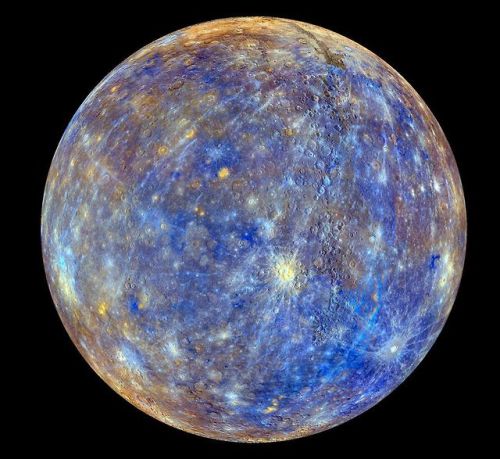

Integrated Space Plan, a 100-year plan to take mankind out of the solar system, has been updated.
The original Integrated Space Plan, created in 1989 >>
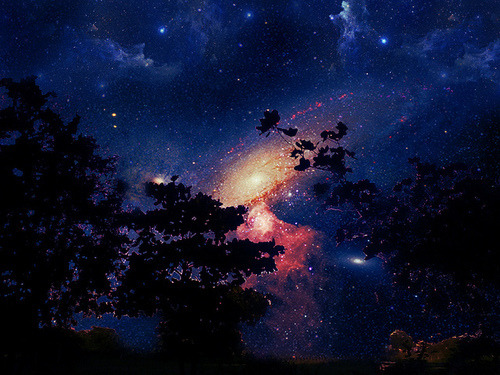
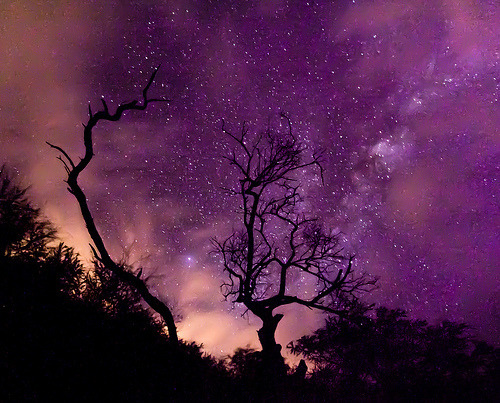
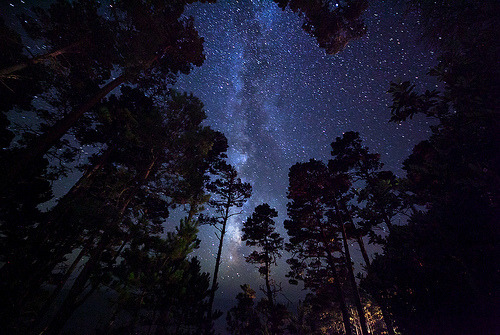
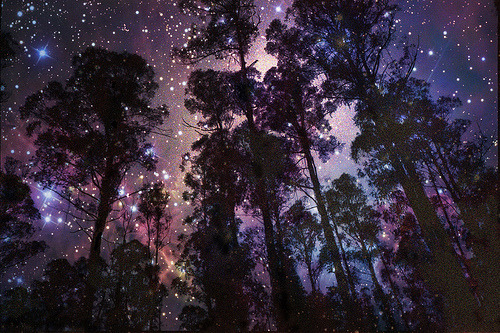
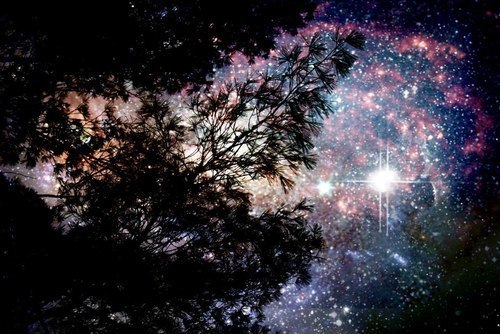
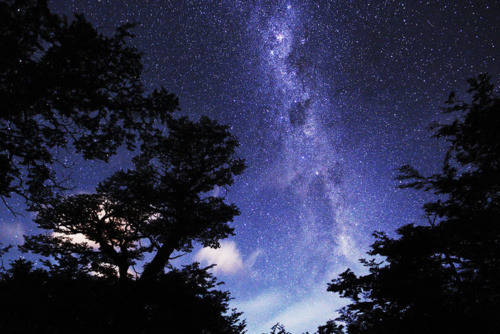
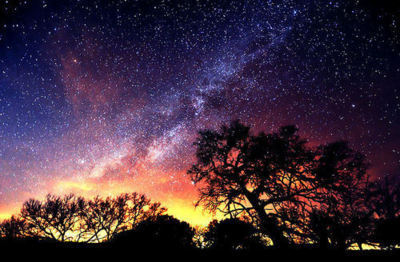
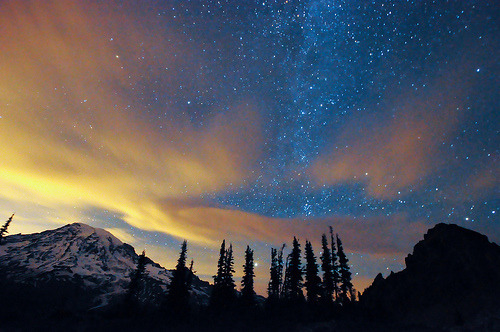

Scientists spot the closest Earth-sized exoplanet yet
Scientists have discovered a new exoplanet that, in the language of “Star Wars,” would be the polar opposite of frigid Hoth, and even more inhospitable than the deserts of Tatooine. But instead of residing in a galaxy far, far away, this new world is, galactically speaking, practically next door. The new planet, named GJ 1132b, is Earth-sized and rocky, orbiting a small star located a mere 39 light-years from Earth, making it the closest Earth-sized exoplanet yet discovered. Based on their measurements, the scientists have determined that the planet is a roasting 500° F (260° C), and it is likely tidally locked, meaning that it has a permanent day and night side — presenting the same face to its star, much like our Moon is locked to Earth.
Read more ~ Astronomy Magazine
Image: In this artist’s rendering of GJ 1132b, a rocky exoplanet similar to Earth in size and mass, circles a red dwarf star. GJ 1132b is relatively cool at about 450° F (230° C) and could potentially host an atmosphere. At a distance of only 39 light-years, it will be a prime target for additional study with Hubble and future observatories like the Giant Magellan Telescope. Credit: Dana Berry

Space imaging progress..
via reddit
-
 lunesweet reblogged this · 10 months ago
lunesweet reblogged this · 10 months ago -
 rugratkid reblogged this · 1 year ago
rugratkid reblogged this · 1 year ago -
 letoseezthings reblogged this · 1 year ago
letoseezthings reblogged this · 1 year ago -
 infiniteproxy reblogged this · 4 years ago
infiniteproxy reblogged this · 4 years ago -
 sspurrfect reblogged this · 4 years ago
sspurrfect reblogged this · 4 years ago -
 sspurrfect liked this · 4 years ago
sspurrfect liked this · 4 years ago -
 equiuszahhak reblogged this · 4 years ago
equiuszahhak reblogged this · 4 years ago -
 hardcodeddead reblogged this · 4 years ago
hardcodeddead reblogged this · 4 years ago -
 tonybcc liked this · 5 years ago
tonybcc liked this · 5 years ago -
 mingdorkie reblogged this · 6 years ago
mingdorkie reblogged this · 6 years ago -
 mingdorkie liked this · 6 years ago
mingdorkie liked this · 6 years ago -
 lusnka reblogged this · 6 years ago
lusnka reblogged this · 6 years ago -
 tinkerbellfaye reblogged this · 6 years ago
tinkerbellfaye reblogged this · 6 years ago -
 maybelldevereaux liked this · 6 years ago
maybelldevereaux liked this · 6 years ago -
 imagination-ins liked this · 7 years ago
imagination-ins liked this · 7 years ago -
 hermes-auslander-2008 reblogged this · 7 years ago
hermes-auslander-2008 reblogged this · 7 years ago -
 stonedwiththefaeries reblogged this · 7 years ago
stonedwiththefaeries reblogged this · 7 years ago -
 rainy-feys reblogged this · 7 years ago
rainy-feys reblogged this · 7 years ago -
 ondinaaa reblogged this · 8 years ago
ondinaaa reblogged this · 8 years ago -
 rosescarves liked this · 8 years ago
rosescarves liked this · 8 years ago -
 leidinascimento liked this · 8 years ago
leidinascimento liked this · 8 years ago -
 spartan-226 liked this · 8 years ago
spartan-226 liked this · 8 years ago -
 teendmax1 liked this · 8 years ago
teendmax1 liked this · 8 years ago -
 tsukarikata reblogged this · 8 years ago
tsukarikata reblogged this · 8 years ago -
 skunky-butter liked this · 8 years ago
skunky-butter liked this · 8 years ago -
 xyblade-blaxen liked this · 8 years ago
xyblade-blaxen liked this · 8 years ago -
 xyblade-blaxen reblogged this · 8 years ago
xyblade-blaxen reblogged this · 8 years ago -
 wtrlilies2001 reblogged this · 8 years ago
wtrlilies2001 reblogged this · 8 years ago -
 shinymetaltrashcan reblogged this · 8 years ago
shinymetaltrashcan reblogged this · 8 years ago -
 ev-lu-blog liked this · 8 years ago
ev-lu-blog liked this · 8 years ago -
 giberish reblogged this · 8 years ago
giberish reblogged this · 8 years ago -
 lastdaysofmagic liked this · 8 years ago
lastdaysofmagic liked this · 8 years ago -
 msbluebuttercup reblogged this · 8 years ago
msbluebuttercup reblogged this · 8 years ago -
 sunwendyrain liked this · 8 years ago
sunwendyrain liked this · 8 years ago -
 queendaenerysstormborn reblogged this · 8 years ago
queendaenerysstormborn reblogged this · 8 years ago
"I don't know who will read this. I guess someone will find it eventually. Maybe in a hundred years or so." -Mark Watney
174 posts